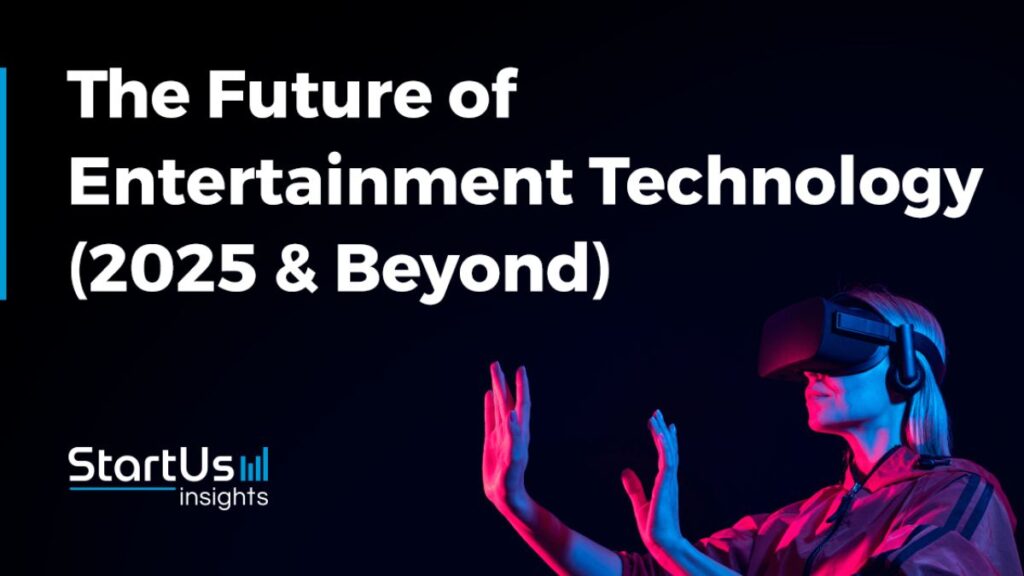In recent years, the entertainment industry has experienced a dramatic transformation driven by advances in technology. From virtual reality (VR) and augmented reality (AR) to artificial intelligence (AI) and machine learning, tech-driven innovations are shaping the way people consume content and interact with entertainment. As we look to the future, it is clear that the possibilities for tech-driven entertainment are vast and far-reaching. In this article, we explore the trends, innovations, and potential impacts of tech-driven entertainment on the industry and consumers alike.
The Evolution of Tech-Driven Entertainment
Tech-driven entertainment is not a new concept. Over the last few decades, technology has continuously pushed the boundaries of how we experience entertainment. The advent of the internet revolutionized how we access music, movies, and TV shows. Streaming platforms like Netflix, Spotify, and YouTube have disrupted traditional media consumption and offered consumers an on-demand, anytime, anywhere experience.
However, the true shift in the entertainment landscape began when immersive technologies such as virtual reality (VR) and augmented reality (AR) gained traction. These technologies provide users with a highly interactive experience that blends the digital and physical worlds in ways that were once thought to be science fiction. Furthermore, AI and machine learning have enabled entertainment providers to create more personalized content experiences, ensuring that users are exposed to the most relevant media based on their preferences and behaviors.
The convergence of these technologies marks the beginning of a new era in entertainment, one where content is increasingly tailored to individual needs, experiences are immersive, and users can interact with entertainment in previously unimaginable ways.
The Impact of Artificial Intelligence on Entertainment
Artificial intelligence is already making significant strides in the entertainment industry. One of the most profound ways AI is being used is in content creation and curation. AI-driven algorithms are now capable of generating personalized recommendations based on a user’s viewing history, interests, and even emotions. For instance, streaming platforms like Netflix and Hulu use AI to suggest movies and TV shows that are likely to appeal to individual users.
Moreover, AI is also being utilized in the creation of content itself. Deep learning algorithms have been used to generate music, write scripts, and even create CGI characters for movies and video games. In the music industry, AI-generated songs are beginning to gain popularity, with some artists using AI to compose tracks or remix existing ones.
The use of AI extends beyond entertainment creation and curation; it also enhances user interactions. Virtual assistants such as Amazon’s Alexa and Apple’s Siri have already transformed how consumers engage with entertainment, offering hands-free control of devices and seamless integration with content providers.
Looking ahead, we can expect AI to further disrupt the industry by enabling even more advanced personalized experiences, automating content creation, and helping creators bring their imaginative ideas to life in ways never seen before.
Virtual and Augmented Reality: Redefining Entertainment Experiences
Virtual reality (VR) and augmented reality (AR) are two of the most exciting technological advancements shaping the future of entertainment. VR immerses users in entirely computer-generated environments, while AR overlays digital elements onto the real world. Both technologies offer users unprecedented levels of interaction and engagement.
In the gaming industry, VR has already had a profound impact, providing gamers with more realistic and interactive experiences than traditional gaming platforms. With VR headsets, players can be fully immersed in a game’s environment, interacting with characters and objects as if they were physically present. The popularity of VR gaming has skyrocketed in recent years, with companies like Oculus, HTC Vive, and Sony PlayStation offering consumer-friendly headsets that deliver high-quality virtual experiences.
But VR is not limited to gaming. It is being adopted across various sectors, including education, tourism, and entertainment. Imagine being able to attend a live concert or theater performance from the comfort of your home, but feeling as if you’re actually there, surrounded by the audience and performers. This is the promise of VR-based entertainment, and it has the potential to revolutionize how we experience live events.
On the other hand, AR technology is enhancing traditional entertainment mediums, such as movies, TV shows, and sports. Pokémon GO, one of the most well-known examples of AR, allowed users to interact with virtual Pokémon in real-world environments. As AR technology advances, we will see even more interactive experiences where digital content seamlessly blends with the physical world. For example, sports fans might use AR to view real-time stats and player information overlaid on the field during a game, or moviegoers could watch characters come to life in the theater space.
In the future, AR and VR will likely become more integrated into our daily lives, offering an entirely new way to consume and engage with entertainment content.
The Rise of Immersive and Interactive Storytelling
One of the most exciting aspects of tech-driven entertainment is the rise of immersive and interactive storytelling. This new form of entertainment goes beyond traditional passive consumption (e.g., watching a movie or TV show) and allows users to actively participate in the story.
One of the best-known examples of interactive storytelling is Netflix’s “Bandersnatch,” an interactive movie in which viewers make choices that affect the plot. This concept is expected to grow in popularity, with more platforms offering similar interactive experiences. Whether through branching narratives, user-driven plotlines, or gamified elements, interactive storytelling empowers users to shape the outcome of the entertainment experience.
Moreover, the combination of VR and AR with interactive storytelling will elevate the experience to new heights. In VR, users can step into the story itself, becoming active participants rather than passive observers. Whether it’s navigating a virtual world, solving puzzles, or interacting with other characters, the opportunities for storytelling will be vast and varied.
The future of immersive and interactive storytelling is incredibly promising, as the technology evolves to create more realistic, engaging, and personalized experiences.
Tech-Driven Entertainment in Social Media and Streaming Platforms
The rise of social media and streaming platforms has revolutionized the entertainment industry in many ways. These platforms have not only changed how content is distributed, but also how it is consumed and shared.
In recent years, social media platforms like Instagram, TikTok, and YouTube have become major players in the entertainment industry, giving rise to new forms of entertainment such as short-form videos, influencer content, and live streaming. As technology continues to evolve, we can expect even more integration of AI, AR, and VR into these platforms to create enhanced, interactive, and engaging content.
For instance, AR filters have become a key feature on platforms like Instagram and Snapchat, allowing users to modify their appearances or surroundings in creative ways. This trend will likely expand as AR technology advances, enabling users to create even more immersive experiences with the click of a button.
Meanwhile, streaming services like Netflix, Amazon Prime, and Disney+ are also incorporating advanced technologies such as AI and machine learning to personalize recommendations and optimize the content discovery process. In the future, we can expect these platforms to offer even more sophisticated features, such as voice-controlled navigation, more accurate content suggestions, and even VR/AR content that users can interact with in real-time.
The Ethical and Social Implications of Tech-Driven Entertainment
While the future of tech-driven entertainment offers exciting possibilities, it also raises important ethical and social considerations. One of the key concerns is the potential for technology to exacerbate issues related to privacy and data security. As entertainment companies gather more data to personalize content and improve user experiences, there is a growing risk of this data being misused or exploited.
Additionally, the rise of AI in content creation and curation brings up questions about the future of work in the entertainment industry. Will AI replace human creators? Or will it serve as a tool that complements human creativity? The answer is likely to be somewhere in between, with AI enhancing and streamlining the creative process but not fully replacing human involvement.
Furthermore, as immersive technologies such as VR and AR become more prevalent, there may be concerns about their impact on social interactions and mental health. Will excessive immersion in virtual worlds lead to social isolation, or will these technologies foster new ways for people to connect and engage with each other? These are important questions that need to be addressed as tech-driven entertainment continues to evolve.
Conclusion: Embracing the Future of Tech-Driven Entertainment
The future of tech-driven entertainment is full of promise, with advances in AI, VR, AR, and other cutting-edge technologies set to redefine how we consume, create, and interact with content. As immersive experiences become more mainstream, we will see the rise of highly personalized, interactive, and engaging forms of entertainment that cater to individual tastes and preferences.
While these advancements are exciting, it is essential to address the ethical and social implications that accompany these changes. By doing so, we can ensure that tech-driven entertainment evolves in a way that benefits both creators and consumers, creating a more inclusive and responsible entertainment ecosystem.
Ultimately, the future of entertainment lies at the intersection of technology and creativity, and it will be exciting to see how these two forces continue to shape the entertainment industry in the years to come.



